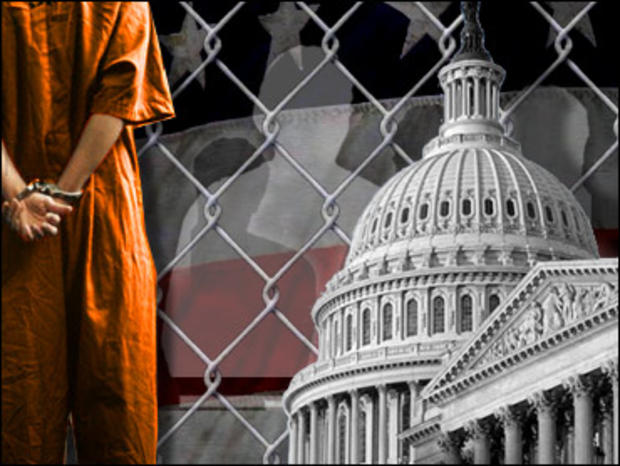In letter, CIA chief undercuts role of torture in search for Osama bin Laden
Following the death of Osama bin Laden, CIA Director Leon Panetta sent a letter to Sen. John McCain detailing the role that torture may have played in locating bin Laden - and the contents in the letter undercut the theory that "enhanced interrogation" techniques were crucial to finding the al Qaeda leader, the Washington Post reports.
In the weeks following bin Laden's death, debate over the use of so-called "enhanced interrogation" techniques (many of which have historically been deemed "torture" in America) has been reignited, particularly in light of the fact that two key terror detainees - Khalid Sheikh Mohammed and Abu Faraj al-Libi - may have revealed important information about the identity of a trusted bin Laden courier after having been subjected to such tactics.
A number of Bush-era figures - including former Secretary of Defense Donald Rumsfeld and former Attorney General Michael Mukasey - have defendedthe use of enhanced interrogation, and argued that, without it, bin Laden may never have been found.
"Consider how the intelligence that led to bin Laden came to hand," entreats Mukasey in a recent op-ed for the Wall Street Journal. "It began with a disclosure from Khalid Sheikh Mohammed (KSM), who broke like a dam under the pressure of harsh interrogation techniques that included waterboarding. He loosed a torrent of information--including eventually the nickname of a trusted courier of bin Laden."
But Panetta's letter, which was obtained by the Washington Post, provides information that largely subverts that theory: The CIA director describes the process of hunting down bin Laden as the result of a decades' worth of "intensive intelligence work" that relied on "multiple streams of information" rather than "one 'essential and indispensible'" piece of information.
"Nearly 10 years of intensive intelligence work led the CIA to conclude that Bin Ladin was likely hiding at the compound in Abbottabad, Pakistan," Panetta writes. "There was no one 'essential and indispensible' key piece of information that led us to this conclusion. Rather, the intelligence picture was developed via painstaking collection and analysis. Multiple streams of intelligence -- including from detainees, but also from multiple other sources -- led CIA analysts to conclude that Bin Ladin was at this compound."
Panetta notes in his letter that the true identity and whereabouts of bin Laden's courier -- the information that ultimately enabled the U.S. to track down bin Laden himself - was not provided through detainees being held by the CIA. "This information was discovered through other intelligence means," he writes.
He adds that some detainees who were subjected to enhanced interrogation "attempted to provide false or misleading information about the [key] facilitator/courier" while being subjected to those techniques, although, he notes, those attempts were helpfully "alerting."
And while the CIA director confirms that some useful information did come from detainees who had, at one point or another, been subjected to harsh interrogations, he declines to make a connection between the effectiveness of the interrogation techniques and the discovery of the information.
"Some of the detainees who provided useful information about the facilitator/courier's role had been subjected to enhanced interrogation techniques," Panetta writes. "Whether those techniques were the 'only timely and effective way' to obtain such information is a matter of debate and cannot be established definitively. What is definitive is that that information was only a part of multiple streams of intelligence that led us to Bin Ladin."

